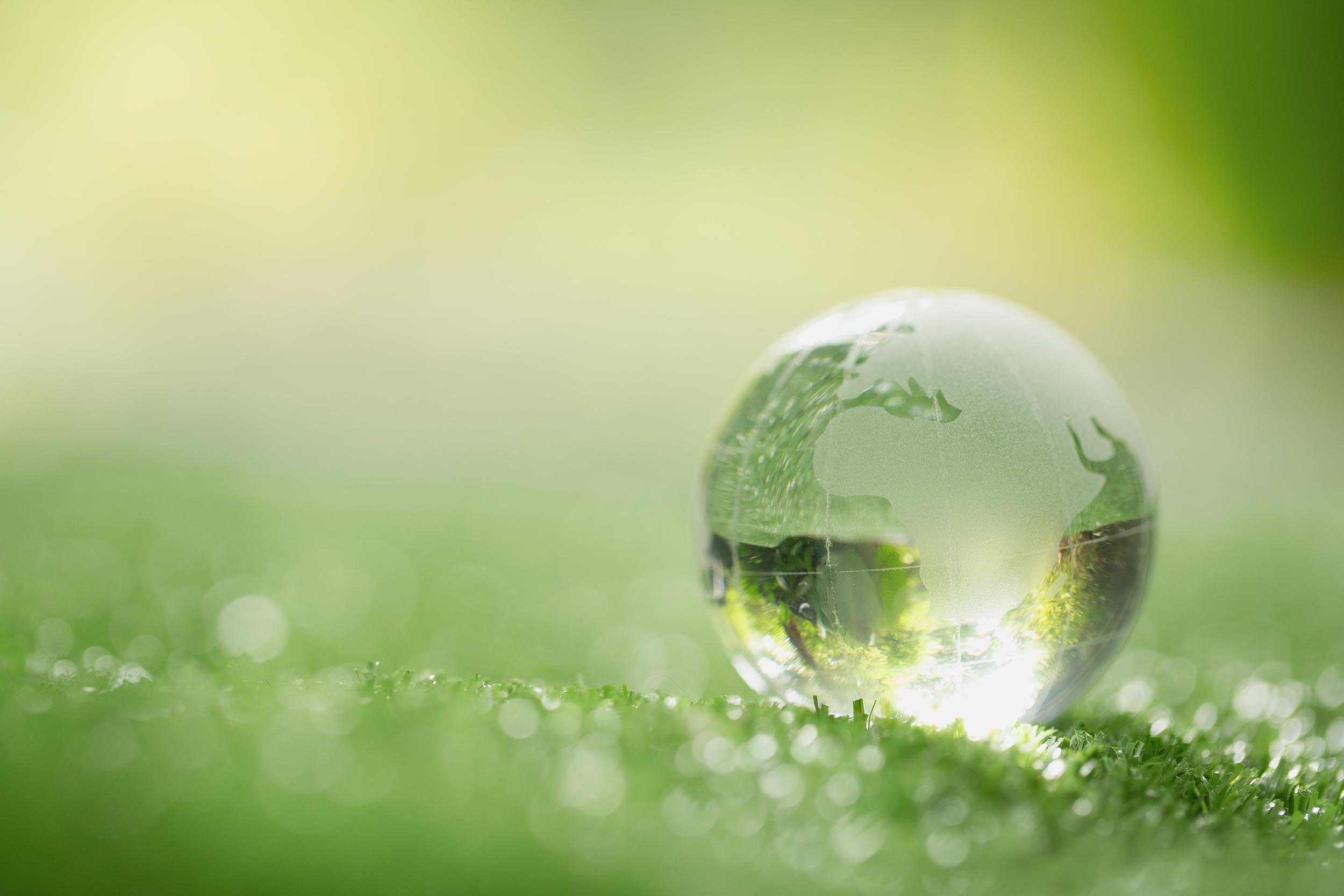
Environmental, Social & Governance
While not all industries are equal, the majority of businesses make use of significant amounts of water either through their industrial processes, their produce creation & growth, their make-up, cooling, washing, sanitary and kitchen use. So how does a wastewater recovery solution help you achieve your ESG targets?
ALGAESYS delivers affordable and indeed margin enhancing benefits for organisations in meeting their ESG targets. Our solution helps them meet a number of the United Nations Sustainable Development Goals.
The ALGAESYS resource recovery centre makes it possible for businesses to adopt wastewater processing and water re-use where previously it was impractical and costly. It does this through having addressed all of the barriers that previously existed, namely:
Footprint - our system typically occupies one-quarter of a traditional wastewater treatment plant
Complexity - our system is simple and robust enough to only need minimal unskilled maintenance
Cost - our CAPEX cost is typically 75% of a comparable system and our OPEX cost is less than 25% of comparable systems
Speed - the treatment time for water in our system is a third of that in a comparable system
Return - an independent party have calculated the ROI to be less than three years
With the elimination of these barriers, the question of quantifiable benefits comes into play and how exactly does an ALGAESYS system help you achieve your ESG targets. Although not all of these benefits may apply to every implementation, as they depend upon the business activities, the characteristics of the wastewater, the intended type of re-use and the prevailing cost/methodology of currently obtaining water for your business, the following provides a good indication of the potential benefits and contribution to your ESG targets:
Through the conditioning of water prior to release, we can eliminate biological and persistent chemical pollutants, and captures nitrates, phosphates, microfibers, microplastics and heavy metals.
In replacing existing technology, we are decarbonising the process as our technology requires no power (other than a very small demand of approximately 0.2 kWh/m3 that can be provided by solar) to operate.
Where biomass is processed as part of our system, we can produce both bio-methane and soil-conditioner as current by-products, with the prospect of producing other high value reuse additives.
We are able to produce water output that meets the highest WHO, EU (Class A), U.S. and Australian reuse standards with pathogen levels down to 1 CFU / 100ml.
So to summarise, you get to re-use almost all of your water obtaining the savings that represents, while generating significant carbon credits and valuable by-products.
If this isn’t compelling enough, the speed of ROI and our flexible engagement model means that whatever your focus is, we have an approach that will deliver what you want. From financing through OPEX cost reductions (pre-purchase agreements for water) to full plant ownership with all benefits and an operational management and monitoring contract, we can find a model that works for all parties.
Take action, call us to see how we can help you achieve your ESG goals, while reducing your operational costs.
ALGAESYS helps asset owners and operators to meet several key SDGs as well as a number of others, dependent on the organisation’s circumstances and activities.
CORE SDGs
GOAL 06: Clean Water and Sanitation
Destruction of pathogens to deliver Reuse Standard without any other treatment; suitable for raw vegetable irrigation
Removal and recovery of organics & nutrients - avoiding chemicals & sludges needing secure disposal
Removal of micro-plastics & metals - avoiding chemicals, with 90% reduction in wastes for disposal, where contaminants are present
Destruction of persistent chemicals (pesticides, pharmaceuticals, anti-foulants, halogenated hydrocarbons, etc) - oxidised by the reactive oxygen species generated by the phototrophic organisms
Affordable alternative to limited freshwater supply - algae & phototrophs more robust to toxins/shock loads than conventional biological systems, hence greater operational reliability
Capable of treating salty water to high standards to enhance desalination membrane performance - in addition to providing high levels of pollutant removal including bio-foulants, ALGAESYS is effective at removing boron, nitrates & silicates, which can otherwise greatly reduce efficacy and longevity of membranes.
GOAL 13: Climate Action
Absorbs CO2, carbon negative process - the autotrophic phototrophs absorb carbonates and carbon dioxide and sequester approximately 100 kg per person per year. Conventional biological treatment systems use air or oxygen to maintain their biomass which results in the generation of respiratory CO2, NOx and methane.
Decarbonises the water economy - The carbon footprint will be negative if the very low electrical energy requirement is supplied using a small photovoltaic system on our system's roof. Conventional biological & chemical treatments consume substantially higher power for equivalent levels of water quality - and often incur a higher construction carbon footprint due to greater use of concrete and other materials.
Substitution of mineral fertilisers - the use of our biofertilizer is estimated to yield much lower emissions than mineral fertilizer. Additionally, conventional wastewater treatment systems remove phosphorus with chemicals, adding to carbon footprint & nullifying beneficial reuse, phosphorus mineral reserves estimated to only provide for 80 years at current consumption.
GOAL 14: Life Below Water
Prevents fish kills, eutrophication & persistent organics entering food chain - ALGAESYS uses what nature gives us - so we can avoid eutrophication in water courses by controlled accelerated consumption of nutients in our photo-bioreactors - nutrients come from sanitary sewage and from agricultural run-off. We also oxidise ammoniacal compounds and convert nitrates into nitrogen gas. Our system is a net generator of oxygen so our system output is rich in dissolved oxygen. As stated elsewhere, our destruction of pesticides, antibiotics, halogenated organics, etc., prevents these substances (re-)entering the food chain.
Improved fish yields - by removing nitrates, phosphorus and other oxygen depleting pollutants as well as persistent chemicals, aquatic life depletion can be reversed and fish health & growth improved, supporting food security.
Improves quality of water re-entering the water cycle - where our output is not to be used directly for human socio-economic use, our recovered water can be used to replenish and recharge aquifers and water courses.
Goal 15: Life on Land
ALGAESYS can produce a valuable biomass by-product as soil conditioner, substituting chemical fertilisers. The biomass has properties similar to diatomaceous soil and help the regeneration of eroded and water-stressed agricultural or forestry land.
SECONDARY SDGs
Goal 11: Sustainable Cities & Communities
ALGAESYS was awarded Top Innovator by the World Economic Forum Uplink programme for the Circular Water Cities solution, helping manage population dense conurbations with no / limited centralised infrastructure with decentralised systems for local sanitation and water security. ALGAESYS delivers water & energy autonomy providing additional sources, raising reliability & security, without dependency on large infrastructure projects. By delivering water security, local communities are able to grow their economies.
Goal 10: Reduced Inequalities
Too often, those closest to freshwater sources over-abstract and pollute leaving less for those downstream. With local control of water resources with affordable recovery of wastewaters, communities are more resilient and able to generate income and relieve poverty, thus leading to greater opportunities for all. The ALGAESYS system design maximises standardised components, universally available and does not depend on imported spares or consumables. This results in extremely low lifecycle costs and asset management burdens.
Goal 12: Responsible Consumption & Production
ALGAESYS helps reduce the over-abstraction of scarce freshwater resources and reduces burdens on existing infrastructure and utilities, greatly reducing environmental impact, lifecycle impact and carbon footprint









